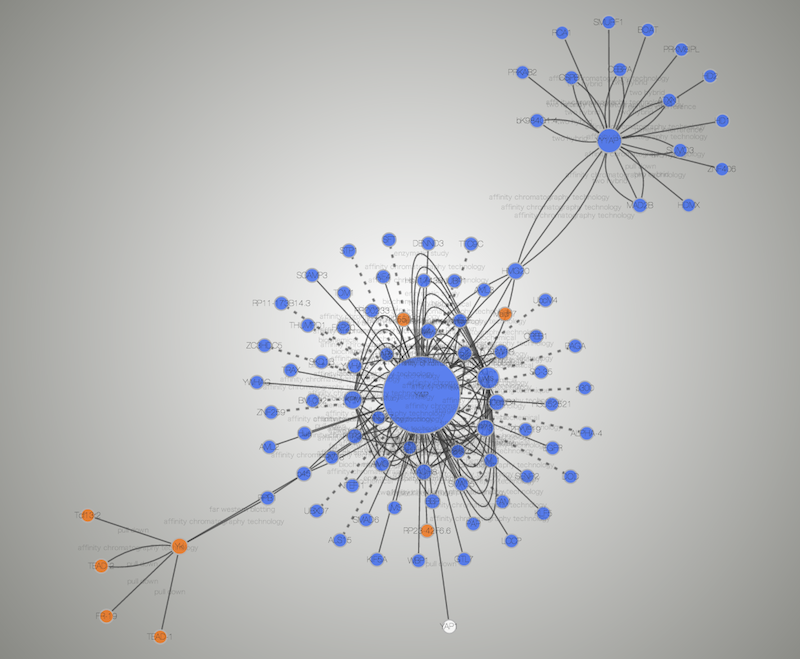

Data are normalized using either rma or mas5 ( Irizarry et al., 2003). Options to import data from local directories and Array Express or GEO are supported ( Davis et al., 2007 Kauffmann et al., 2009). The DvD pipeline provides a number of processing options to generate genome-wide expression profiles from microarray experiments (see Fig. In the final networks, drug or disease nodes are linked to the DrugBank ( and Medical Subject Headings (MeSH) ( web browsers, respectively.
#CYTOSCAPE VISUALIZATION WITH NEGATIVE EDGE FULL#
The Cytoscape ( plug-in provides a user interface to the full DvD pipeline, as well as a visualization platform for the results. DvD is flexible, offering customizable and default data options for the input profiles and the reference data. This reference data has associated networks where, unlike similar tools, drugs or diseases exerting similar effects on transcription are grouped into clusters. With DvD, users can automatically compare input profiles to reference drug data from CMap and disease profiles curated from GEO. DvD differs from existing web servers and databases (such as ProfileChaser, MARQ and SPIED, see Supplementary Material) in that it can dynamically access both Array Express and GEO to generate input profiles. This is done by making use of gene set enrichment analysis ( Subramanian et al., 2005) and visualizing the final results in networks containing clusters of similar drugs and diseases. Motivated by this, we have developed Drug versus Disease (DvD), an R package to ‘match’ drug and disease profiles. It is expected that analysing new and existing data from public repositories such as Array Express ( Gene Expression Omnibus (GEO) ( and the Connectivity Map (CMap) ( using these methods will become increasingly popular in computational drug discovery ( Iorio et al., 2012). This highlights the potential power of mining existing safe compounds for repurposing, which does not require the expensive and extensive initial design and clinical phases of drug discovery. These methods have resulted in hypotheses of differential uses (repurposing) for existing compounds that have been validated experimentally. The central paradigm is that a drug compound, which shows the opposite effect on gene expression to the observed for a disease could be used to treat that particular disease. GPL54: A yeast heat shock microarray experiment from GEO.Multiple methods based on matching gene expression signatures have been proposed to identify anti-correlated drug and disease profiles ( Hu et al., 2009 Sirota et al., 2011).Colins (2007): A merged dataset of three yeast APMS experiments.To make sure you now have a working knowledge of Cytoscape, choose one of the following datasets Other tutorials are available at: Introductions and Concepts Guided Tour of Cytoscape Finding Network Data Network Analysis and Viz Hands-on Exercises Wrap up and "Exam" Wrap up Perform a WikiPathways query for "ovarian cancer".Perform a STRING disease query for "ovarian cancer".(hey, I could probably teach this course!) I've played with Cytoscape, but still have a lot to learn.Some network analysis, but what's Cytoscape?.Prior Cytoscape or network analysis experience? Roving Engineer, National Resource for Network Biology.Executive director, Resource for Biocomputing, Visualization, and Informatics.Introductions John "Scooter" Morris, UCSF Introductions and Concepts Guided Tour of Cytoscape Finding Network Data Network Analysis and Viz Hands-on Exercises Wrap up and "Exam" Know where to find relevant Cytoscape apps and tutorials.Master network layouts and data visualization.Perform basic topological and other network analyses.Understand the major applications of network biology.Goals and Motivations By the end of this workshop you should be able to: Data Analysis & Visualization in Cytoscape Slides:


 0 kommentar(er)
0 kommentar(er)
